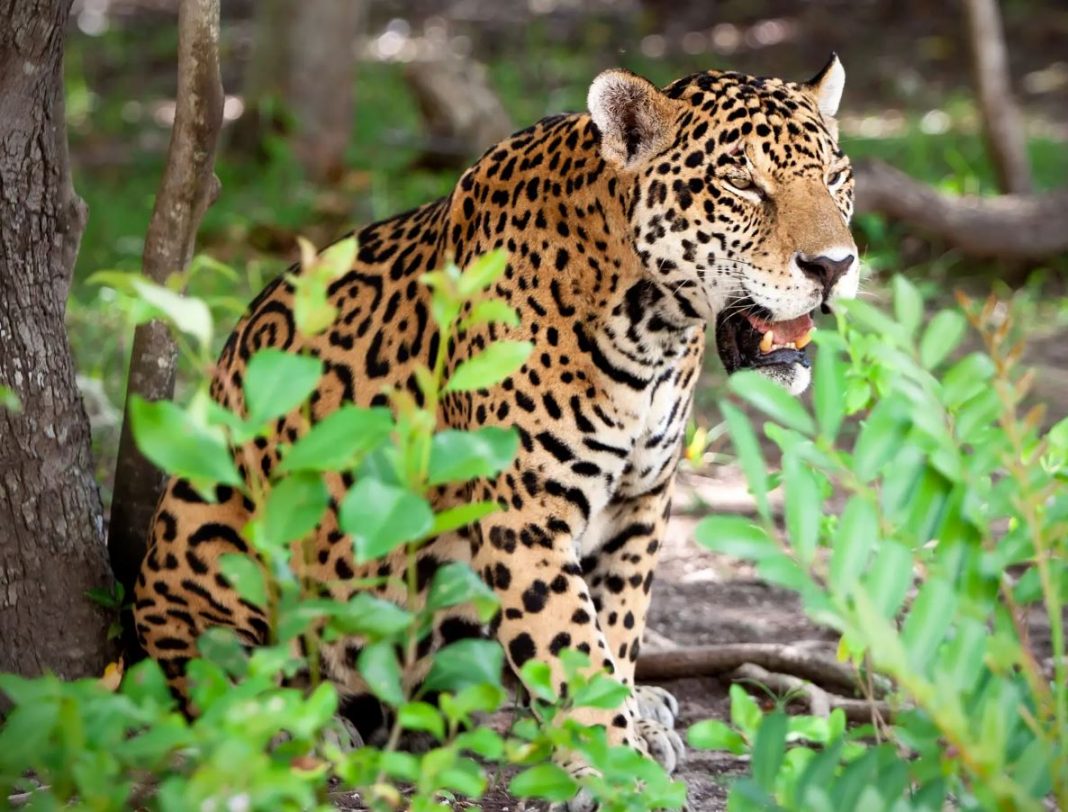You can see all the way to Guatemala from the top of the huge pyramid at the ancient Maya city of Calakmul, which is located on the southern tip of the Yucatán Peninsula in Mexico. The forest extends out in every direction as far as the eye can see, forming an ocean of green that is only broken up by the stepped pyramid tops of two more Maya temples.
During my visit there in March, there were just a handful of other tourists present. The Maya city of Calakmul was once one of the largest and most powerful cities in the world, but it is now in ruins. It is located several hours away from the nearest urban centre and is surrounded by the Calakmul Biosphere Reserve, which is one of the largest expanses of uninterrupted tropical forest in the Americas.
It was just before dusk, and the black howler monkeys were beginning to stir from their slumber. The guttural, trash-compactor howl of the loudest land mammal in the world could be heard coming from beneath the forest canopy. This area is home to a number of endangered species, including pumas, toucans, spider monkeys, and coati-mundis, amongst others. The forest of Calakmul is home to the largest concentration of jaguars in all of Mexico, which is maybe the most important fact to know.
Jaguars are elusive creatures that are capable of causing severe damage to a person’s skull with only one bite if they feel threatened. It takes even the most experienced trackers many days, if not weeks, to locate jaguars in the jungle, and I was well aware that it was quite improbable that I would actually see one in person. The primary purpose of my excursion to Calakmul was to investigate the ecosystem in which the jaguar population was experiencing a renaissance, to acquire a deeper comprehension of the significance of the species as well as the environmental pressures it is currently encountering, and to have conversations with some of the most influential people involved in the fight to save the species.
During the early part of the 20th century, archaeologists excavating the site of Calakmul discovered the tomb of the city’s most powerful monarch, who was known as Jaguar Claw. The species formerly roamed the whole of the American continent, from what is now Maryland through the Pacific Northwest and all the way down to the southernmost point of South America. There are entire temples dedicated to the creature in nearby communities.
After it became public knowledge that the jaguar population was growing, the government came to the conclusion that the best way to route the railroad line was in accordance with the requirements of conservation, which included the addition of multiple wildlife passes. A provisional agreement was also reached to extend the Calakmul Biosphere Reserve beyond its current extent of 726,000 hectares, which is equivalent to roughly 1.8 million acres, and to link it with other reserves in the region. According to what Dr. Ceballos indicated, “we will end up with 1.3 million hectares of protected forest” if the government remains true to its word and keeps its promise. “It will be one of the biggest in all of the world’s tropical regions.”
We went by what is known as the “Bat Volcano,” which is a dried-out cenote, also known as a limestone sinkhole, that is home to more than three million bats of eight different kinds. These bats emerge into the air every evening just before dusk. As we made our way more slowly into the jungle, we were greeted by multicoloured ocellated turkeys that crossed the road in front of the automobile. Nearly 70,000 different kinds of plants and animals may be found in the Calakmul Biosphere Reserve, making it one of the most biologically varied areas on Earth.
We entered the archaeological zone and proceeded on foot into the ancient city of Calakmul. This city was once home to more than 50,000 people and was the location where the Ka’an dynasty, which was one of the most powerful Maya dynasties, attained both its pinnacle and its demise. We strolled past old plazas that included carved monuments that had been extensively corroded and depicted scenarios from the city’s previous existence in hieroglyphic language and images. These scenes included births and funerals, festivals and warfare.
Following supper, we made our way into the reserve to see the base camp where the Jaguar Alliance does its research. The camp is comprised of a collection of palapa huts that are situated around a small lake. When we arrived, it was pitch black outside, yet it seemed as if the forest was just starting to wake up. The noises of nocturnal animals such as cicadas, frogs, owls, and numerous more could be heard reverberating through the air as the night progressed. I went to one of the palapa huts and, after removing a giant black tarantula that had made its way inside and set up home above my bed, I let the rhythmic hum of Calakmul’s jungle to lull me to sleep.
In the end, I was unable to see a jaguar, but the forest had an effect on me anyway. The atmosphere was steamy and full of life, resonating with the sounds of tropical birds and insects chirping and buzzing. I looked up into the canopy to see swarms of spider monkeys swinging among the trees. The gnarled strangler figs wound their way upwards into the heavens. When you’re really in the middle of the forest, it seems to be bottomless, unfathomably vast, and completely impregnable. However, the size of this forest decreases with the passing of each year.

